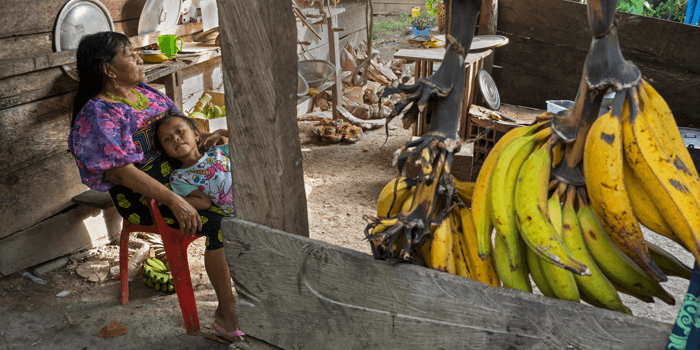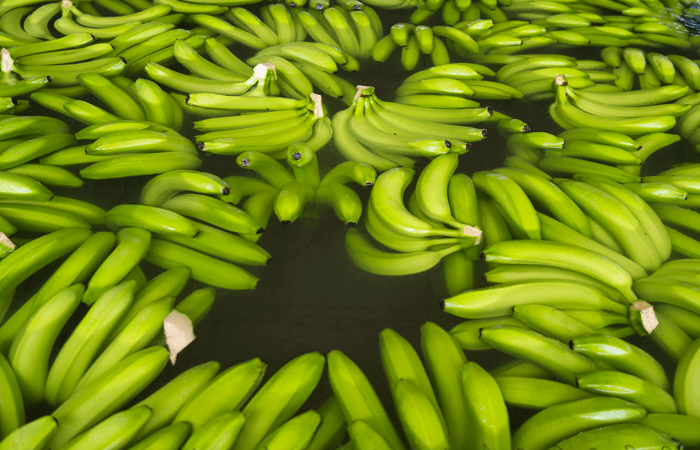1. Fairtrade is the only certification scheme with a minimum price
Banana farmers and workers across the world are facing increased financial struggles and uncertainty. Fairtrade’s minimum price means that farmers and workers can build their resilience. This year Fairtrade raised the minimum price, while in 2021 we introduced a Base Wage for banana plantation workers.
More reasons to make sure the bananas you buy have the FAIRTRADE Mark.
Find out where to buy Fairtrade bananas.
2. Fairtrade Premium for banana farmers and workers totalled £114 million
Between 2000 and 2020, Fairtrade banana sales in the UK generated over £114 million in Fairtrade Premium for farmers and workers
Fairtrade Premium is an additional sum of money which goes into a communal fund for workers and farmers to use to improve their social, economic and environmental conditions.
For example, in Panama the Coobana co-operative used their Premium to improve their housing situation and support education for their members and their families.
Watch a film about the Coobana co-operative.
3. Bananas have tonnes of health benefits
Bananas are loaded with potassium, which helps regulate heart function and blood pressure. Potassium-rich foods help to lower blood pressure and protect against heart disease and strokes. Nutritional and tasty!
4. You can use banana peel to calm itchy mosquito bites
Next time you peel a banana, pause before you chuck out the peel. Do you have any insect bites? Banana peel contains an anti-inflammatory agent which can help soothe your skin.
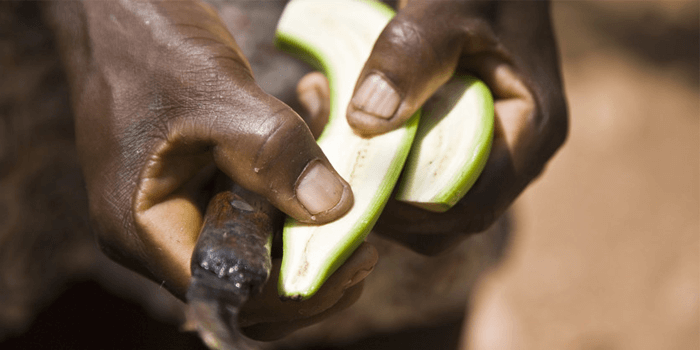
5. You can eat banana peel
Did you know that banana peel is edible? Enjoyed in many parts of the world, banana peel contains high amounts of vitamins B6 and B12. Usually baked or fried, it can also be blended raw into a smoothie – just make sure you wash it first.
6. You can use banana skins to shine your shoes
The potassium found in bananas is a key ingredient in shoe polish. Simply peel your banana and use the inner lining of the skin to rub all over your shoes. Buff up afterwards with a soft cloth.
7. Bananas are the backbone of many countries’ economies

Trading bananas is the cornerstone of many lower-income countries’ economies, with an estimated global export value of $7 billion. It is believed that for more than 450 million people in lower-income countries, bananas (and plantains) are essential staple crops.
8. Bananas come from all over the world
Originally, bananas came from Asia but today they are grown all over the world. India produces the most bananas overall. Most of the bananas sold in the UK come from Latin America. In fact, 90% of all Fairtrade bananas come from Latin America and the Caribbean.
There are currently 258 Fairtrade certified banana organisations (co-operatives and commercial farms), representing over 36,480 farmers and workers in 16 countries.
9. Bananas don’t grow on trees
Bananas are herb and a fruit! Distantly related to ginger, bananas are classed as an herbaceous plant rather than a tree because what appears to be a trunk isn’t actually a trunk. Instead the leaves are tightly wrapped around a single stem, which leads up to a fruit-bearing flower stalk.
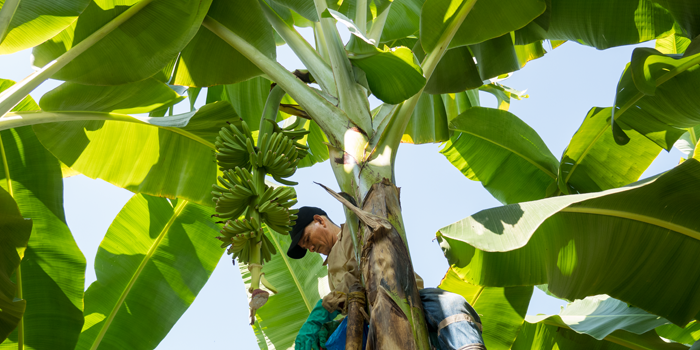
10. The Fairtrade Premium supports living wages for banana workers
Workers in plantations are among the most vulnerable people in global trade. They are often paid poverty-level wages.
A 2022 Fairtrade study shows that the Fairtrade Premium plays a critical role in supporting living wages for banana workers in Ghana and Colombia. In addition to contributing to increased cash benefits, the study found that the Fairtrade Premium also supports healthcare, education and housing.
Read more in our report Living Wage and the Fairtrade Premium.
11. 47% of bananas grown worldwide are Cavendish
There are more than 1,000 banana varieties across the world, but the Cavendish makes up almost all of the entire export market.
Before the 1950s, the Gros Michel variety was the world’s favourite banana, but it was wiped out due to its susceptibility to Tropical Race 1 (TR1), also known as Panama disease. Farmers turned to the more reliable Cavendish, although today it no longer remains immune to Panama disease…
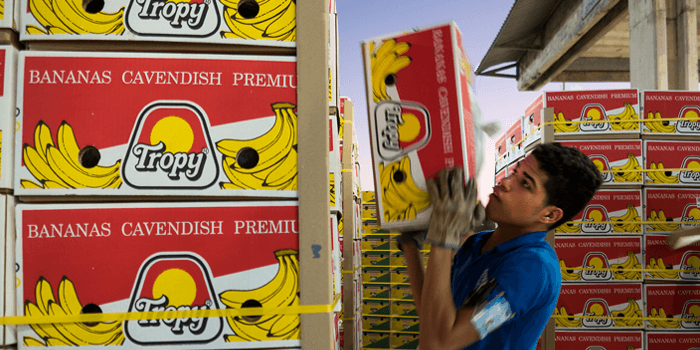
12. Panama disease is a major threat to the banana trade
The current strain of the Panama disease – Tropical Fusarium 4 (TR4) – attacks Cavendish bananas. Some 10,000 hectares of Cavendish have already been destroyed.
TR4 originated in Asia and is now found in many parts of the world, including Latin America. Colombia had their first confirmed case in 2019 and Peru in 2021. This is of great concern to Fairtrade banana growers, as 90% of all Fairtrade bananas come from Latin America and the Caribbean. Scientists are attempting to create a robust variety that could replace the current crop.
